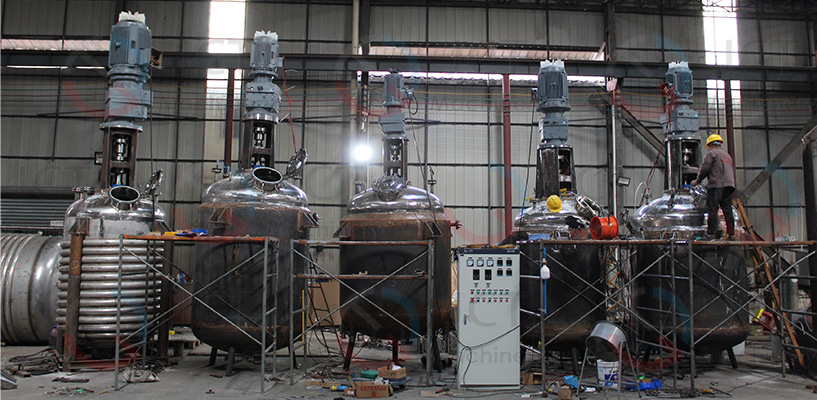Although both hot melt glue reactor and polyol reactor are chemical stirring reaction equipment, they have significant differences in design and configuration due to the different viscosities, process temperatures, and reaction characteristics of their respective products.
Appearance and Structure
Hot melt glue reactor is usually shorter and fatter, with moderate capacity and more openings on the lid, which is convenient for adding raw materials, vacuuming, installing temperature and pressure sensors, etc. Since the material viscosity is high and easy to stick to the wall during the production of hot melt adhesive, it is often equipped with a wall and bottom scraping device, and the bottom of the reactor is mostly conical or curved to facilitate smooth discharge. The structure of polyol reactor is higher, with a large volume, a more "slender" appearance, and a more compact opening design, which is convenient for automated continuous production.
Stirring System
Hot melt glue reactor usually uses multi-layer frame, scraping wall stirring, or dual-axis design, which can better deal with colloidal, high-viscosity materials and avoid dead corners and wall sticking. The stirring viscosity requirements of polyol reactor are lower, and anchor or frame blades are generally used. More attention is paid to stirring uniformity and heat transfer efficiency to ensure a stable and smooth reaction process.
Heating Method
Hot melt glue reactor mostly uses a combination of jacket + coil heating, mainly using heat transfer oil. The temperature requirement is usually between 130°C and 180°C. The temperature control must be accurate and stable to prevent the hot melt adhesive from burning or losing viscosity. Polyol reactor pays more attention to reaction heat release and cooling control, so it is often equipped with precise temperature control systems. It can use heat transfer oil, steam or electric heating. The key is that the reaction curve must be controllable to avoid side reactions.
Sealing and Vacuum System
Hot melt glue reactor emphasize sealing performance and are often equipped with mechanical seals or magnetic seals, and is equipped with vacuum degassing systems to remove bubbles and prevent oxidation. Some products also require nitrogen protection. Polyol reactor usually emphasize airtightness and stable pressure management of the system, but the vacuum requirements are not as strict as those of hot melt adhesive reactors.


 Home
Home JCT
JCT  Jun 09,2025
Jun 09,2025 
 Why Use Sigma Mixer To Produce Ink?
Why Use Sigma Mixer To Produce Ink? 







